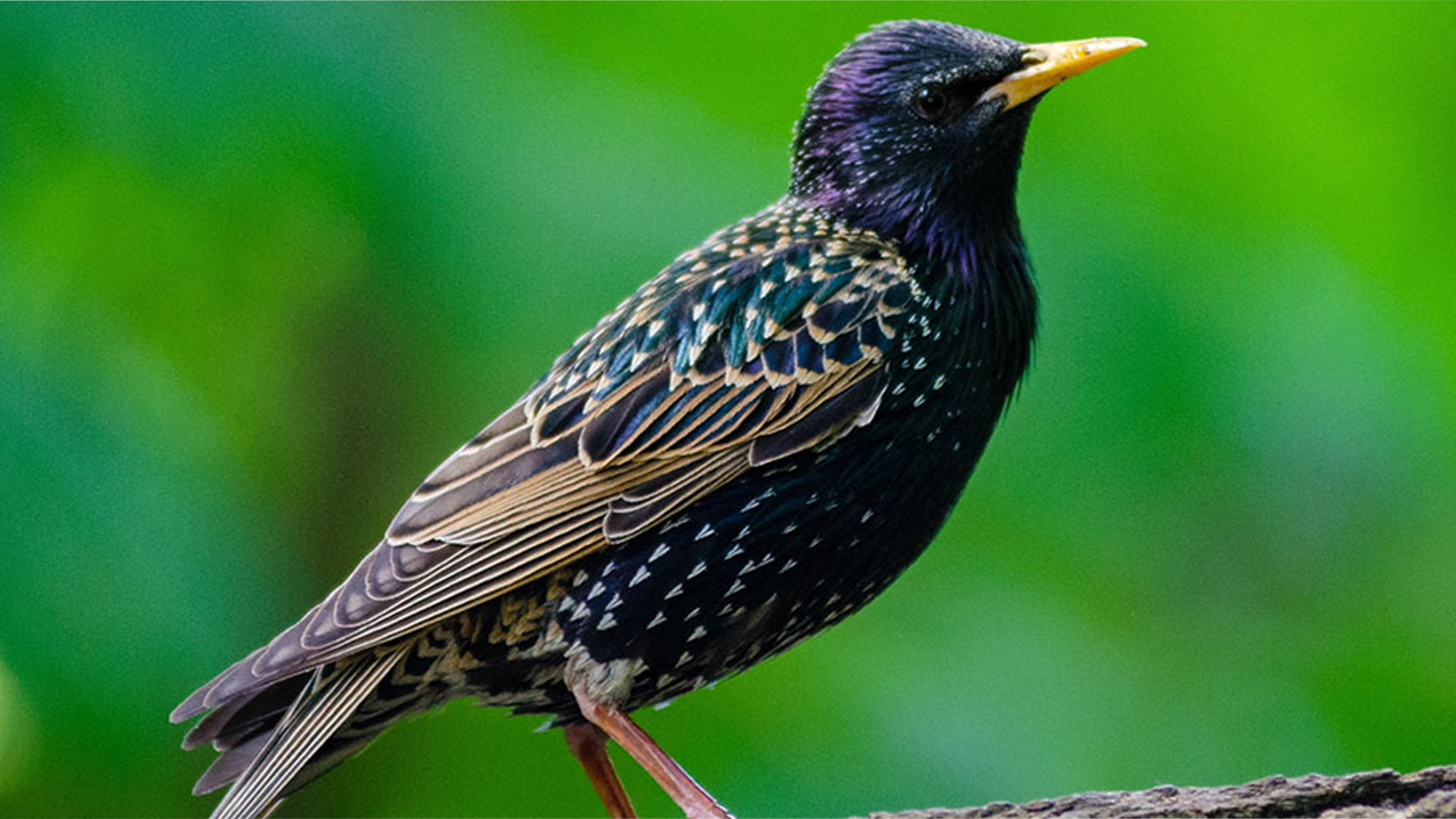 Biology
Biology


4678993 / 5565753
Starling
Bird of the Year
In general, male and female starlings look very much alike. In spring, starlings assume their nuptial plumage, in autumn, after moulting, they wear their eclipse plumage.
The nuptial plumage of spring consists of black feathers that have a green, blue and violet metallic sheen. Females then have bright spots on the upper side of the feathers. Both sexes have a yellow bill with a light blue base for the males and a reddish one for the females.
Details of this plumage can be recognised especially clearly in this starling in the NABU Bird Protection Centre in Mössingen. It has a bill injury which is being treated here before it is released again.
The starling has a length of about 20 centimetres. It is between a parrow and a blackbird in size. It could be mistaken for a blackbird male at the most. But blackbirds have no shining plumage and, moreover, a longer tail.
Its almost triangular wings are rather short compared with birds of a similar size. As short-distance or medium-distance migrants, starlings do not have to cover long distances. Their wings are broad since they mostly inhabit the open countryside. Compared to them, blackbirds have longer and narrower wings with which they can fly better in the dense forest.
Starlings fly with rapid and strong wing beats. Gliding flight is used before landing.


Curriculum-centred and oriented towards educational standards
Matching
Peer Mediation
Lena and Max attend the 7th form. Max is new in class. During a break, Max notices that Lena and her friend are laughing at him again. Max loses his temper! He slaps Lena in the face. That hurts and Lena runs back into the classroom with a red cheek. The growing conflict between the two has escalated. Just like Lena and Max, every day pupils all over Germany have rows with each other. At the Heinrich Hertz Gymnasium in Thuringia, pupils have been trained as mediators for years. At set hours, they are in a room made available by the school specifically for mediation purposes. The film describes the growing conflict between Max and Lena and shows a mediation using their example. In doing so, the terms “conflict” and “peer mediation” are explained in a non-technical way. The aims of peer mediation and its progress in five steps as well as the mediators’ tasks are illustrated. The art of asking questions and “mirroring”, which the mediators must know, is described and explained. Together with the comprehensive accompanying material, the DVD is a suitable medium to introduce peer mediation at your school, too.
Product Piracy
Counterfeiting takes place in almost all economic sectors – textiles, watches, car parts, machine parts, tools, accessories, software and medicines. Some counterfeits are easy to recognise, others are so well-executed that even experts have difficulty distinguishing between original and imitation. This DVD covers the development of a product from idea to manufacture. Once a product has become a trademark, product pirates appear on the scene.









